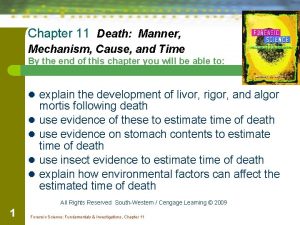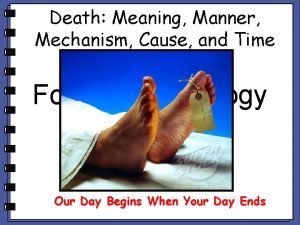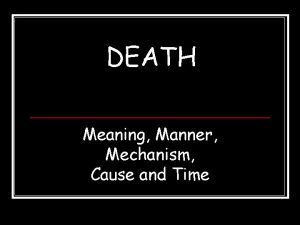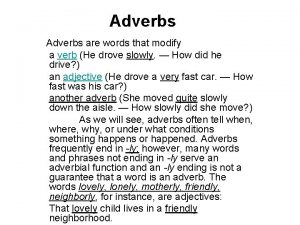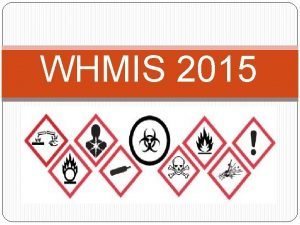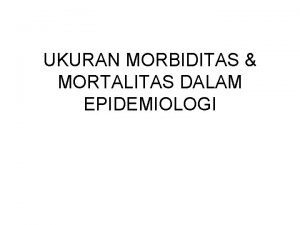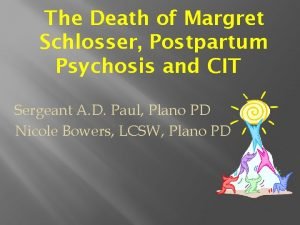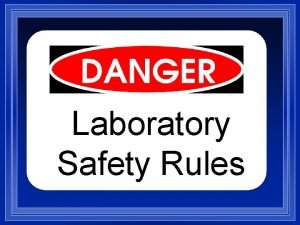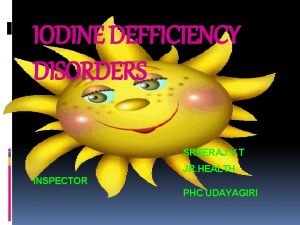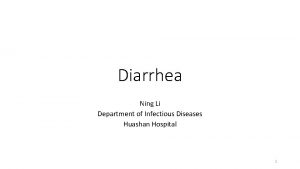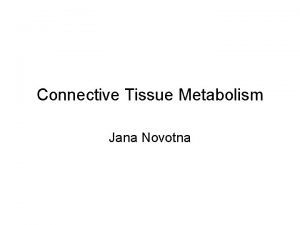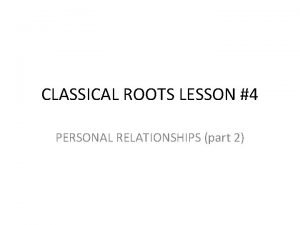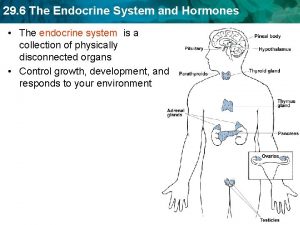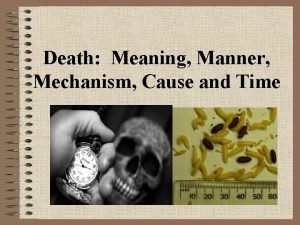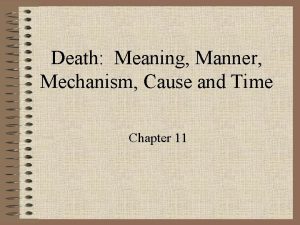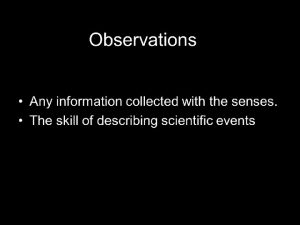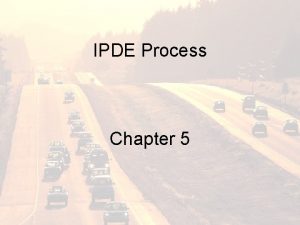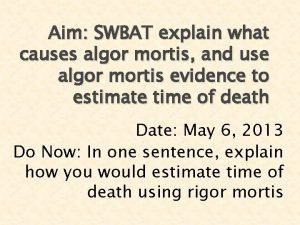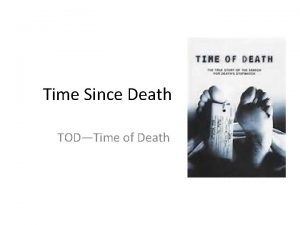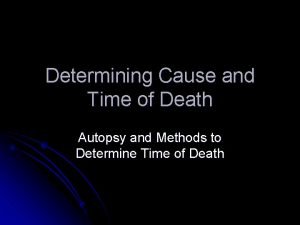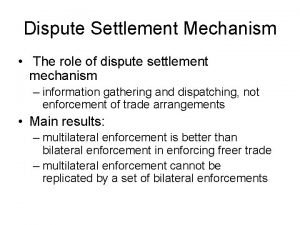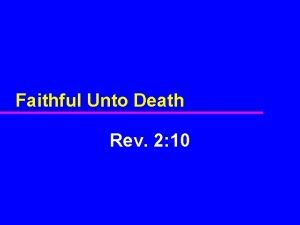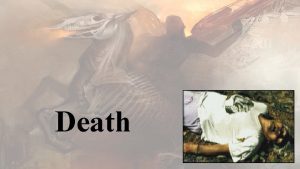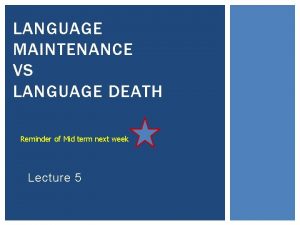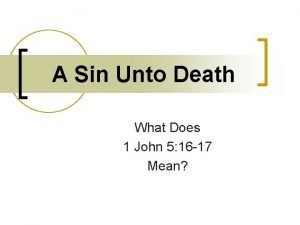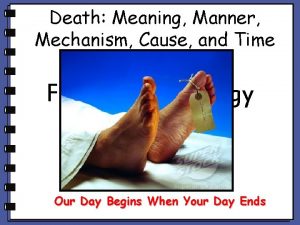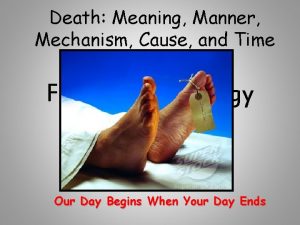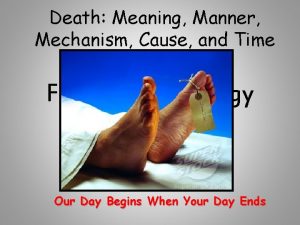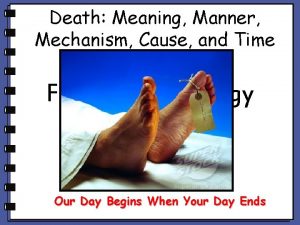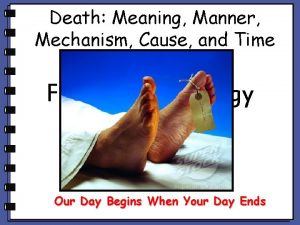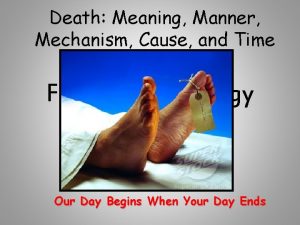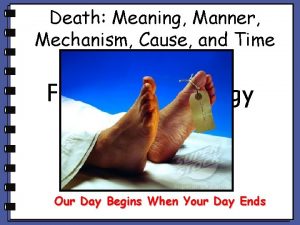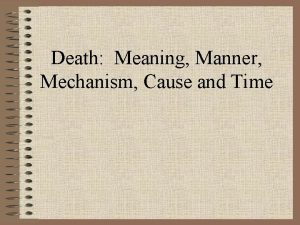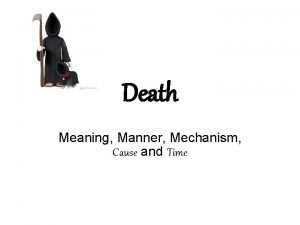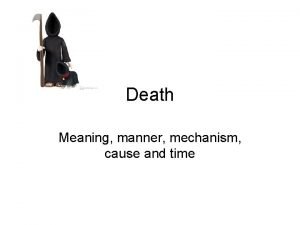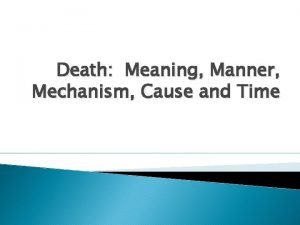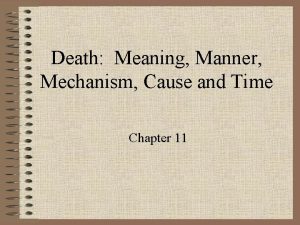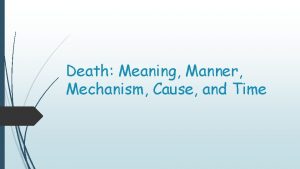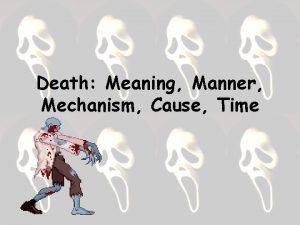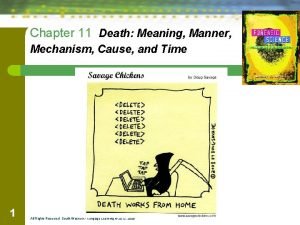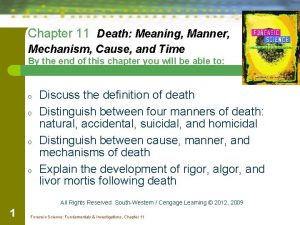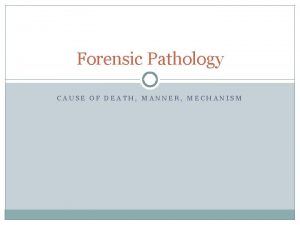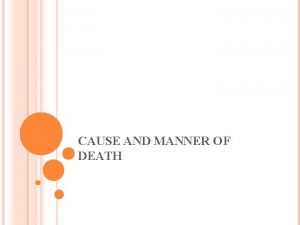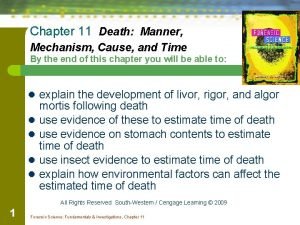Death Meaning Manner Mechanism Cause and Time Forensic



















































































- Slides: 83

Death: Meaning, Manner, Mechanism, Cause, and Time Forensic Pathology Our Day Begins When Your Day Ends

Chapter Objectives Ø Discuss the definition of death. Ø Distinguish between four manners of death: natural, accidental, suicidal, and homicidal. Ø Distinguish between cause, manner, and mechanisms of death. Ø Explain how the development of rigor, algor, and livor mortis occurs following death. Ø Use evidence of rigor, algor, and livor mortis to calculate the approximate time of death. Ø Describe the stages of decomposition of a corpse. Ø Use evidence from the autopsy’s report on stomach contents to estimate time of death. Ø Explain how time of death can be estimated using insect evidence. Ø Provide an example of the succession of different types of insects that are found on a body as it decomposes. Ø Given insect evidence, livor, rigor, and algor mortis data, be able to estimate time of death. Ø Describe how various environmental factors may influence the estimated time of death.

Engage-Opening Activity • How do you know someone is dead or alive? • Make a two column chart and label it “Dead or Alive” and write as many characteristics as you can. Dead Alive

Introduction ü Death is the cessation or end of life. ü Death is the irreversible cessation of circulation of blood and brain activity. ü Death is not a single activity, it is a process consisting of several stages Stethoscope

autolysis • Autolysis occurs when cells break down. • Once enough cells begin to break down, life cannot be restarted. • When the cell membrane dissolves, enzymes and other cell contents spill out and digest surrounding tissues.

• https: //www. youtube. com/ watch? v=gus_2 a. OKN 2 c • https: //www. youtube. com/ watch? v=XYEQmg. T 4 nx. E • https: //www. youtube. com/ watch? v=w. Mn. Y 0 q 5 q 0 FY

Exit slip • Describe the differences between a medical examiner and a Coroner • If you had to choose one as a career for

Is a coroner the same as a medical examiner? Ø Each state has a law requiring that either a coroner or a medical examiner oversee the investigation of unexpected deaths. Ø Click here to watch video-clip Medical Examiners vs Coroners Ø After watching the video complete differences and similarities between Medical examiners and Coroners. Ø Review the compare and contrast worksheet.



Ø Forensic medicine is the application of various medical specialties to legal issues. Ø Pathology refers to the study of disease. Ø Forensic Pathologist is a medical doctor who studies injuries and disease to determine the cause and manner of death. (in suspicious deaths) Ø Medical Examiner is a forensic pathologist who conducts autopsies to determine the cause, manner, and mode of death by examining the internal organs of the corpse. Ø Coroner is a public officer whose primary function is to investigate by inquest any death thought to be of other than natural causes. Ø

The Manner of Death • There are 4 ways a person could die, referred to as the manner of death: 1. Natural 2. Accidental 3. Suicidal 4. Homicidal • A fifth manner of death should be added: 5. Undetermined or Unknown

• Natural death – caused by the interruption and failure of body functions resulting from age or disease. The most common cause of death • Accidental death – caused by unplanned events (car accident) • Suicide – when a person kills themselves on purpose (hanging myself) • Homicide – the death of one person by another person (shooting someone)

• A man with a heart condition is attacked and dies from a heart attack during the assault. Is the manner of death an accident or a homicide? • An elderly woman dies after being kept from receiving proper health care by her son. Is the manner of death natural or homicide?

• In both cases, homicide would be the manner of death.

Cause and Mechanism of Death • The reason someone dies is called the cause of death • Proximate cause of death refers to an underlying cause of death as opposed to the final cause. – Example: radiation→cancer= radiation exposure is the proximate cause of death. • Mechanism of death describes the specific change in the body that brought about the cessation of life. • Ex-cause of death is a shooting, mechanism of death is loss of blood


Review Causes and Mechanisms of Death Take notes • Examples of causes of death: – heart attack, gunshot wound, skull fracture, diseases or injuries, stroke, burning, drowning, strangulation, hanging, suffocation, massive trauma, bludgeoning • Examples of mechanisms of death: – – – – Exsanguination (bleeding to death) Sepsis (infection in blood stream) Brain trauma (cerebral contusion) Brain bleeding (intra-cerebral bleed) Stop breathing (asphyxia) Pulmonary arrest Cardiac arrest

Examples: Manner of death: - homicide Cause of death: - smothering Mechanism of death: - asphyxia Manner of death: - homicide Cause of death: - stabbing Mechanism of death: - loss of blood

• Man shot during robbery. Man stabilizes. Develops pneumonia. Followed by kidney failure, liver failure, heart failure, death. Had prior lung and heart disease, and probably would have survived if not for these diseases. • Manner of death? • Cause of death? • Mechanism of death?

Manner of death: - homicide Cause of death: - gunshot Mechanism of death: - heart failure

Whitney Houston death certificate: No cause of death listed Click here ← to read the news article.

• Write a short scenario that include information about cause and manner and mechanism of death, without labeling them as such. • Exchange your scenario with other students and try to classify theirs. **look up using your cell phones** • Get your scenario back and add the following: – your answers to your own scenario and – the manner, cause and mechanism of death of: • Jon Bennet Ramsey • Whitney Houston • Michael Jackson • Hugo Chavez (Don’t forget to turn in your classwork)

• Assignment: • You will work with a partner to research (use your cell phones) and identify the manner, cause, and mechanism of death of any 3 of the following people. In Addition write a few sentences about who each person was. Hand in at the end of the period. • 1 -Jon Bennet Ramsey • 2 -Whitney Houston • 3 -Michael Jackson • 4 -Hugo Chavez • 5 -Anna nicole smith • 6 -nicole simpson-brown • 7 -paul walker • 8 -heath ledger

The manner, cause and mechanism of death of: • – – – Jon Bennet Ramsey Manner – homicide Cause – strangulation Mechanism – asphyxiation - respiratory arrest • Whitney Houston – Manner – accidental – Cause – drowning – Mechanism – Pulmonary arrest

• – – – Michael Jackson Manner – homicide Cause – acute propofol intoxication Mechanism – cardiac arrest • Hugo Chavez – Manner – natural – Cause – heart attack – Mechanism – Pulmonary arrest


Time Of Death • During an autopsy, a FE wants to determine when the person died. • Many factors are used to approximate the time of death. – – – Livor Mortis Rigor Mortis Algor Mortis Stomach and intestinal contents Insects

Livor Mortis • Death color • Blood seeps down to the tissues and settles into the lower parts of the body. • Hemoglobin turns purple when it spills out of cells. • Purplish color is visible wherever blood pools. • Pooling of blood (lividity), provides a clue as to how long the person has been dead. • It begins about 2 hours after death and becomes permanent after 8 hours. • If corpse is left outside on a hot summer day, livor mortis takes place at a faster rate. Cool room, livor mortis is slower. • It’s also affected by anything impeding flow of blood, such as belts, wristwatches, etc. • It also provides the position of corpse during 1 st 8 hrs. • It reveals if a body has been moved.

Livor Mortis also known as hypostasis or Lividity (Latin: livor—"bluish color, " mortis—"of death") postmortem lividity (Latin: postmortem—"after death", lividity—"black and blue")

Lower legs showing both lividity and blanching. Pressure points from ground, belts, etc. prevent blood from settling



Questions: 1. What’s another name for Livor Mortis? 2. Livor mortis can provide important clues. What are they? 3. What factors could affect livor mortis? 4. How a criminal might be able to disguise the time of death by controlling the ambient conditions that affect livor mortis.

Questions and Answers 1. What’s another name for Livor Mortis? Lividity, hypostasis 2. Livor mortis can provide important clues. What are they? Time of death, position of corpse, if the body has been moved 3. What factors could affect livor mortis? Ambient Temperature (warm=faster) (cold room=slower) Anything impeding flow of blood (tight belt or wristwatch) 4. How a criminal might be able to disguise the time of death by controlling the ambient conditions that affect livor mortis. Accept logical answers –Freezer, Trunk of car

• • • Rigor Mortis Death stiffness It is temporary. Used to determine the time of death. Starts within 2 hours after death. Stiffness starts in the head (eyelids) and gradually works its way down the legs. The body is at the most rigid state after 12 hours. Stiffness disappears after 36 hours. It may remain up to 48 hours depending on body weight and ambient temperature. Stiffness occurs because skeletal muscles are unable to relax and remain contracted.

Ø Rigor Mortis – refers to a stiffening of the body resulting from lack of oxygen pumped to the muscle cells after the heart stops beating. Ø ATP stops being produced Ø It begins in the eyelids and lower jaw Ø It spreads to the neck and rest of body Ø Completely set in within 12 hours of death Ø Lasts appx 30 to 36 hrs Ø Body goes back to a non-rigid state Ø Loosening of rigid muscles follows the same progression as when it sets in. (eyes, jaw, neck, body)

Rigor Mortis • Many factors affect when rigor mortis sets in and how long it last. 1. Ambient temperature • The cooler the body, the slower the onset of rigor. • The warmer the body, the faster the onset of rigor. 2. Person’s weight – body fat stores extra oxygen and will slow down rigor. Obese – slows rigor Thin – Accelerates rigor 3. Type of clothing – presence of clothes accelerates rigor. Naked body slows down rigor. 4. Illness – with fever, rigor will set in faster. Hypothermia , the onset of rigor will be slower. 5. Physical activity - exercising, faster 6. Sun exposure – direct sunlight, faster Refer to figure 11 -9 Page 315

An unfortunate victim of suicide. Note that rigor mortis has maintained the position of his arms after the shotgun has been removed.

If a body needs to be transported when rigor mortis is at its peak, it might be necessary to break bones to change the position of the body.

Questions: 1. List and explain the 6 factors that affect rigor mortis. 2. Refer to Figures 11 -8 and 11 -9 and propose a set of conditions that would cause rigor mortis to proceed the quickest and the slowest and explain why. 4. Complete Activity 11 -1 Calculating Time of Death using Rigor Mortis.

Algor Mortis • It means death heat. • It describes the temperature loss in a corpse. • To take a corpse’s temperature, investigators insert a thermometer into the liver. • Approximately one hour after death, the body cools at a rate of 0. 78°C (1. 4ºF) per hour. • After the first 12 hours, the body loses about 0. 39°C (0. 7°F) per hour until the body reaches the same temperature of the surroundings. • TOD determined by body temperature calculations is always expressed as a range of time because it cannot be calculated exactly. • Rule of thumb: Heat Loss = 1 degree F per hour.

Algor Mortis - refers to the change of temperature that occurs after death due to the lack of energy. Ø 98. 6 degrees F (37 degrees C) - normal body temperature Ø Warm to the touch up to 3 hours after death Ø Around 4 to 6 hrs – cool to the touch Ø After 24 hrs – temp of the external environment.

Factors affecting Algor Mortis • Complete the following chart: Factors affecting Algor mortis Temperature Wind Body fat Clothing Event Effect Circumstances Cold temperature Accelerate algor Lose heat faster Warm temperature Slows algor Lose heat slower Windy Accelerate algor Faster heat loss Calm Slows algor Slower heat loss Obese Slows algor Slow down heat loss Thin Accelerate algor Speed up heat loss Presence of clothing Slows algor Slow down heat loss Absence of clothing Naked Accelerate algor Speed up heat loss

Factors affecting Algor Mortis • Complete the following chart: Factors affecting Algor mortis Event Effect Circumstances

Practice: Examples First 12 hours: the body looses of (0. 78°C) = (1. 4ºF) per hour. After the first 12 hours, the body loses about (0. 39ºC) = (0. 7ºF) per hour Normal body temperature = (37ºC) = (98. 6ºF) 2. Calculate the time of death if a person has been dead for less that 12 hours. Temperature of dead body is 32. 2ºC (liver) 37º - 32. 2ºC = 4. 8ºC 1. What is the temperature loss for someone who has been dead for 12 hours? 0. 78 x 12 = 9. 36°C How long did it take to lose 4. 8ºC? 0. 78 x unknown # hrs = degrees lost 0. 78 x X = 4. 8ºC Therefore: X = 4. 8 = 6. 1 hours 0. 78 Refer to Activity 11 -2 for more examples and questions.

Practice: Examples First 12 hours: the body looses of (0. 78°C) = (1. 4ºF) per hour. After the first 12 hours, the body loses about (0. 39ºC) = (0. 7ºF) per hour Normal body temperature = (37ºC) = (98. 6ºF) 1. What is the temperature loss for someone who has been dead for 12 hours? 0. 78 x 12 = 9. 36°C 2. Calculate the time of death if a person has been dead for less that 12 hours. Temperature of dead body is 32. 2ºC (liver) 37º - 32. 2ºC = 4. 8ºC How long did it take to lose 4. 8ºC? 0. 78 x unknown # hrs = degrees lost 0. 78 x X = 4. 8ºC Therefore: X = 4. 8 = 6. 1 hours 0. 78 Refer to Activity 11 -2 for more examples and questions.

Stomach and Intestinal Contents • It takes 4 to 6 hours for stomach to empty its contents into the small intestine and another 12 hours for the food to leave the small intestine. • It takes approximately 24 hours from when a meal was eaten until all undigested food is released from the large intestine. • Conclusion: – 1. If undigested stomach contents are present, then death occurred 0 to 2 hrs after last meal. – 2. If stomach is empty but food is found in the small intestine, then death occurred at least 4 to 6 hrs after a meal. – 3. If the small intestine is empty and wastes are found in the large intestine, the death occurred 12 or more hours after a meal.


Changes of the Eye Following Death • Surface of eye dries out. • Thin film observed within 2 to 3 hrs if eyes were open and within 24 hrs if eyes were covered after death. • Following death, potassium accumulates inside vitreous humor. • The buildup of potassium may be used to estimate the time of death.

Truth Lies In The Eyes The eyes of a victim can also hold answers to the time of death, as a thin cloudy film is developed over the eye within 3 hours after death has occurred. The eyeballs become softer as a result of less fluid pressure behind the eye and the degree to which this has occurred can be used as a measure of the time since death. Again, a less common procedure for deaths that evidently occurred out of the limit of several days.

• Take a close look at these eyes. • Do you see the tiny red dots on the eye's upper white part and the inside of the eyelid? This condition is called petechial (tiny dots) hemorrahage (bleeding). What does this tell a medical examiner? When, during an autopsy, does a medical examiner find such a condition? • Video Clip

Petechial Hemorrhages Bleeding is a loss of blood from the body and hemorrhage means bleeding profusely. Read and discuss hand-out. (Time Since Death)

• http: //www. healthline. com/ human-bodymaps/vitreous-humor

Estimating Time of Death Body Condition External condition ü Insects ü ü Plants Maggots Animals Environment ü ü ü Color Temperature Eyes Rigor Mortis Livor Mortis Body Internal Condition üGastrointestinal Content üDegree of Putrefaction üVitreous fluids electrolyte üBiochemical changes üDecomposition

Questions: Use “Time Since Death” worksheet List and explain the 6 clues that could be used to estimate the time since death. (from body) List and explain 3 clues that could be used to estimate the time since death. (external conditions) Note: Please refer to the “Time Since Death” handout given and discussed in class.

Stages of Decomposition • A corpse decomposes in predictable ways. – Within 2 days after death: • • Cell autolysis begins Green and purplish color occurs Skin takes marble appearance Face becomes discolor – After 4 days: • Skin blisters • Abdomen swells – Within 6 to 10 days: • • • Corpse bloats Chest and abdomen burst and collapse Fluids leak Eyeballs and other tissues liquefy Skin sloughs off Decomposition = Rotting

The speed of decomposition depends on: – Person’s age – Size of body – Nature of death • sick vs healthy individuals • Young vs elderly individuals • Overweight vs normal weight – Environment • Naked vs clothed bodies • Temperature range – Decompose faster in 21 -37ºC – Higher temperatures dry out corpses preserving them – Lower temperatures prevent bacterial growth and slow down decomposition • Humidity – Moist environments speed up decomposition – Bodies decompose faster in air and slower in water or if buried.

• Study Fig. 11 -11 on page 317 There are 5 different stages of body decomposition. 1. The “Fresh or Initial “ Stage 2. The “Bloated or Putrefaction” Stage 3. The “Decay or Black Putrefaction” Stage 4. The “Post-Decay or Butyric Fermentation” Stage 5. The “Skeletal or dry” Stage

Initial decay or Fresh Stage 0 to 3 days after death Although the body shortly after death appears fresh from the outside, the bacteria that before death were feeding on the contents of the intestine begin to digest the intestine itself. They eventually break out of the intestine and start digesting the surrounding internal organs. The body's own digestive enzymes (normally in the intestine) also spread through the body, contributing to its decomposition.

Putrefaction or Bloated Stage 4 to 10 days after death The pig has become bloated from the build up of gases within the body. The build up of gas resulting from the intense activity of the multiplying bacteria, creates pressure within the body. This pressure inflates the body and forces fluids out of cells and blood vessels and into the body cavity.

Black putrefaction or 10 to 20 days after death The pig's body has collapsed with black exposed surfaces and creamy flesh. A large volume of body fluids drain from the body at this stage and seep into the surrounding soil. Other insects and mites feed on this material. The insects consume the bulk of the flesh and the body temperature increases with their activity. Bacterial decay is still very important, and bacteria will eventually consume the body if insects are excluded.

Butyric fermentation or Post Decay Stage 20 to 50 days after death The pig is now very flat and beginning to dry out. All the remaining flesh is removed over this period and the body dries out. It has a cheesy smell, caused by butyric acid, and this smell attracts a new suite of corpse organisms. The surface of the body that is in contact with the ground becomes covered with mould as the body ferments.

Dry decay or Skeletal Stage 50 -365 days after death The body is now dry and decays very slowly. Eventually all the hair disappears leaving the bones only. The pig has been reduced to hair and bone.

Questions: • Make a chart listing the factors that could either accelerate or slow down the decomposition process. Accelerate Slow down

Questions: • Make a chart listing the factors that could either accelerate or slow down the decomposition process. Accelerate Slow down Being sick at TOD Young Overweight Naked bodies At 21 -37 degrees Celcius Moist environment Body found in soil Healthy at TOD Elderly Normal weight Clothed bodies Higher temperatures (preserve bodies) Lower temperatures (prevent bacterial growth) Dry environment Body found in water

FORENSIC ENTOMOLOGY

Insects • Insects can provide detailed information about time of death in several ways. • There is an entire field dedicated to study insects called “Forensic Entomology”. • Within minutes of death, certain insects arrive to lay their eggs on the warm body, attracted by the smell of the first stages of decomposition. • The eggs will hatch and feed on the tissues. • Blowflies are a common example. • Flesh flies are another example.

• Blowflies are attracted to two gases of decomposition: – Putrescine – Cadaverene • As the corpse progresses through the stages, other kinds of insects will arrive. – Tiny wasps come to lay their eggs on maggots already present in the body – Cheese skippers arrive once putrefaction is underway; they are attracted by the seepage of body fluids. – Mites and beetles feed on dry tissues and hair.

Blowflies • One of the first insects to arrive at a dead body. • Very useful in determining the TOD. • They exhibit different stages as they develop from eggs, larva (also known as instars), pupa and adult.

Blowfly

Refer to Fig 11 -17 Page 319

Maggot spiracles Refer to Figure 11 -18 A close up of one spiracle Electron micrograph 73

Fly larvae - Maggots First-instar Second-instar Third-instar 74

Flesh Fly - Sarcophaga bulata

Wasp

Mite Beetles

• It’s easy to identify the stage of a blowfly by noting the change in size, color, mobility, presence or absence of a crop, and number of spiracle slits. (posterior end) Eggs are off-white, and laid in clusters of 25 -500. One-day-old larvae are only about 2 mm in length, and almost transparent. By the time the maggots are 3 or 4 days old, they have grown to about 1 cm (1/2 inch) long.

Pupa, Adult Fly, Maggot

• If a corpse contains blowfly eggs, then the approximate time of death would be 24 hours or less. • If a corpse contains third stage larvae, then the time of death is approximately 4 to 5 days. • If a corpse contains pupae, then the time of death would be approximately 18 to 24 days. • Many factors affect insect development: • • Temperature Moisture Wind Time of day Season Exposure to elements Variation among individual insects Describe ADH


The Body Farm 1 acre of land owned by the University of Tennessee

 Chapter 11 death meaning manner mechanism
Chapter 11 death meaning manner mechanism Manner mechanism and cause of death
Manner mechanism and cause of death Manner mechanism and cause of death
Manner mechanism and cause of death Forensic anthropologist vs forensic pathologist
Forensic anthropologist vs forensic pathologist Forensic psychiatry vs forensic psychology
Forensic psychiatry vs forensic psychology Underlying cause and immediate cause
Underlying cause and immediate cause Proximate cause and ultimate cause
Proximate cause and ultimate cause Proximate causation biology example
Proximate causation biology example Learned behavior biology
Learned behavior biology Forensic pathology definition
Forensic pathology definition What is svompt
What is svompt Adverb time place manner
Adverb time place manner Mechanism of death definition
Mechanism of death definition Start time end time and elapsed time
Start time end time and elapsed time Ghs acronym whmis
Ghs acronym whmis Rumus csdr
Rumus csdr Dena schlosser crime photo
Dena schlosser crime photo Vladimir lenin cause of death
Vladimir lenin cause of death Short exposure can cause death
Short exposure can cause death The death of the apostles
The death of the apostles Harry houdini death date
Harry houdini death date Peter eckersley death
Peter eckersley death Edward fudge cause of death
Edward fudge cause of death Portia may white early life
Portia may white early life Lyle alzado cause of death
Lyle alzado cause of death Maria emília miranda
Maria emília miranda Antonio vivaldi cause of death
Antonio vivaldi cause of death Mozart was born in 1756
Mozart was born in 1756 Wolfgang amadeus mozart death cause
Wolfgang amadeus mozart death cause Brock franklin
Brock franklin Chrisomes cause of death
Chrisomes cause of death Charles capps cause of death
Charles capps cause of death йоханес вермер catharina bolnes
йоханес вермер catharina bolnes What is cause of death?
What is cause of death? Ning li illness
Ning li illness Yana novotna cause of death
Yana novotna cause of death Mali empire religion
Mali empire religion Cremation in sikhism
Cremation in sikhism Cause of death
Cause of death What was humpty dumpty's cause of death geometry
What was humpty dumpty's cause of death geometry Cause of death
Cause of death Who is the founder of herbalife
Who is the founder of herbalife Masako natsume cause of death
Masako natsume cause of death Jon brower minnoch cause of death
Jon brower minnoch cause of death The vague and misleading instructions
The vague and misleading instructions Eldridge moores cause of death
Eldridge moores cause of death Franz marc cause of death
Franz marc cause of death Direk wenn deramas cause of death
Direk wenn deramas cause of death 1 corinthians 11 27 28
1 corinthians 11 27 28 Marbling of skin after death
Marbling of skin after death Meaning:manner
Meaning:manner Compare and contrast conjunctions
Compare and contrast conjunctions Conjunctions to express time place and cause
Conjunctions to express time place and cause Francois-emanuel fodere
Francois-emanuel fodere Father of forensic serology
Father of forensic serology What type of design principle is used in the royal altar
What type of design principle is used in the royal altar What is a dangling modifier
What is a dangling modifier Contoh creative brief iklan
Contoh creative brief iklan Deliberate and systematic manner
Deliberate and systematic manner Effects of bad manners
Effects of bad manners Having or displaying a friendly and pleasant manner
Having or displaying a friendly and pleasant manner What factors can cause the ipde process to take more time?
What factors can cause the ipde process to take more time? Activity 11-4 estimating time of death answer key
Activity 11-4 estimating time of death answer key Hypostsis
Hypostsis Which disease
Which disease Dispute settlement mechanism meaning
Dispute settlement mechanism meaning You were the one at the beginning
You were the one at the beginning Victory over death meaning
Victory over death meaning Summarize the masque of the red death
Summarize the masque of the red death Origin
Origin Prologue of romeo and juliet translation
Prologue of romeo and juliet translation Faithful unto death meaning
Faithful unto death meaning Be thou faithful unto death lyrics
Be thou faithful unto death lyrics The death of a righteous man
The death of a righteous man Unattended death meaning
Unattended death meaning What figure of speech is o death where is thy sting
What figure of speech is o death where is thy sting Language death definition
Language death definition Oath of the horatii neoclassical or romantic
Oath of the horatii neoclassical or romantic I am become death the destroyer of worlds meaning
I am become death the destroyer of worlds meaning Sin not unto death
Sin not unto death Ablative of respect
Ablative of respect Adverb of degree
Adverb of degree Telephone manner adalah
Telephone manner adalah Places of articulation
Places of articulation
